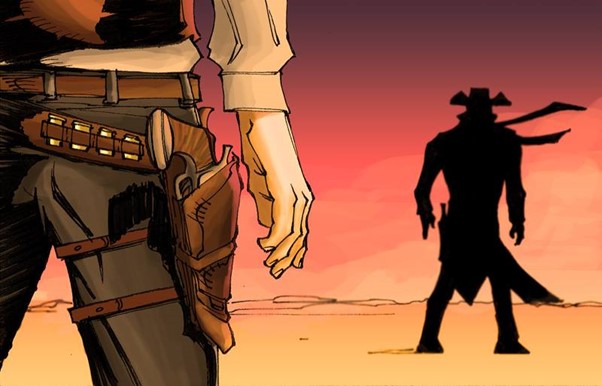Designs on Service Design
28 February 2024
On Tuesday I had the pleasure of teaching my ‘Introduction to Service Design’ course to a group of people from a range of different organisations, including, I’m pleased to add, several people from my own organisation, Cardiff University.
Service Design is an improvement methodology that is currently quite trendy and to someone who learnt their craft in the ‘LEAN Enterprise Research Centre’, it can feel quite tense when a new improvement methodology arrives in town. ‘What are this lot all about then?’ ‘Will they be able to deliver what ‘we’ can deliver?’ ‘Heaven forbid, might they ultimately ‘win’?!
The privilege of being an academic in a University is that it’s literally your job to investigate new ideas within your subject area of specialism and to think intensely about them. This is something that we were all actively encouraged to do within the Lean Enterprise Research Centre thanks to the inspirational educational leadership of John Bicheno, a globally renowned lean expert but someone who was exceptionally open to new ideas. He actively encouraged exciting new thinkers to come and speak to our MSc Lean Operations students and we were privileged to learn from people like John Seddon and Steven Spear about their approach to improvement and organisational change. John Bicheno rightly believes that improvement and learning go hand in hand – that if you stopped learning, you stopped thinking, you stopped seeking to understand – ergo your ability to be a true improvement specialist would be massively in doubt.
So when I started to hear bubbles and tiny murmurs about ‘Service Design’ as a ‘thing’, I tried to be less ‘pistols at dawn’ and more ‘oo what’s this all about then?!’ It is really important for me to think about improvement as an evolution of ideas and that each wave of improvement understanding, whether it be quality management, lean, in all of its various forms, six sigma, the theory of constraints, or agile, adds something very important to our understanding of the best way to make work, work. Indeed, I believe that each new wave emerges, almost deliberately, to counteract the lack of focus, or thought, about a certain important aspect of change that the preceding wave has overlooked or forgotten.
And reader, I really liked what I found. Service Design is deeply focused on customers and not just what they ‘value’, it asks you to get inside the customer’s soul, what they are thinking and feeling and how their service experience can be completely tailored to these requirements. This massively appeals to my penchant for intense emotional experiences and my flair for drama.
Lean principle number one of course is basically ‘who are your customers and what do they value’, so exploring this in detail has always been part of the lean lexicon, but unfortunately this critically important task can sometimes be forgotten about when people start to see the wonderful benefits of lean principles number 2 and 3, ‘work out all of the steps that need to be taken to currently deliver value’ and ‘make them flow’. The genius seven lean wastes of Transportation, Inventory, Motion, Waiting, Overproduction, Overprocessing and Defects can be far too alluring a proposition and ‘waste reduction’ wrongly becomes much of the focus of people’s improvement endeavors.
Service Design is a methodology that completely orientates itself around the customer to the extent that it would be impossible not to completely consider customers’ needs within a Service Design transformation. And this is its key advantage I think. The customer is EVERYTHING within a Service Design approach.
Other benefits of Service Design include the fact that it has been born from creative thinkers, from artists and designers, so there’s something aesthetically pleasing and beautiful about how the ideas within service design are expressed. Thinkers such as Ideo’s Tim Brown inject inspiration about what’s possible by approaching the need for change from a position of innovation as an art form. The joy of how aesthetically pleasing the tools are and how they inspire creativity, helps the people who use them to be more creative and to think more about the artistry of how their services are experienced.
Service Design is also something that we can all instantly orientate ourselves around because we are all customers of service experience. There aren’t many barriers to entry. We know that the best way to instigate improvement within health for example, is to orientate all team members, be they senior consultants, healthcare managers, specialist administrators or hospital porters, around the purpose of why they are all there – to care for the patient. There’s something about the relentless customer obsession of service design that cuts through the technical, sometimes alienating, methodologies of six sigma say, that helps teams come together around a common aim, to make things better for their patient.
So yes, I’ve really enjoyed understanding Service Design as a methodology more – the new things it has to offer and critically, understanding how this improvement wave fits with the other methodologies I know. Service Design is not the complete answer, as is the case with each of the other methodologies, but understanding them all better, learning about them all, and keeping your mind open to new ideas, helps to make you a better improvement specialist, able to flex to different contexts and be able to pull all manner of weapons from your armory to attempt to deliver positive change.
- Lifetime Loyalty and Taylor Swift
- Looking at Things Differently
- Networking Noodles
- Addicted to Truth
- Designs on Service Design
- The Multiple Joys of Universal Design
- Hungry Cultures
- Event Lean
- The Traffic Analogy
- Moving on Up
- Rosé Cava Revolution?
- Powerpoint Sneaky Lean
- Writing about Writing
- ChatGPT Response: Exploring the Art of Expression: Unveiling the Magic of Writing in the Style of Sarah Lethbridge
- Help to Grow Coldplay Style
- Caring IS Everything!
- Institutional Flapping
- “Just Do the Next Right Thing”
- Trust Thermoclines
- Organisational Tempo
- The Inaugural Lethbridge Customer Service Awards
- Vaccine Lean – The Dawn of the Water Spider
- The Queen and Lean
- Decisions, Decisions, Decisions
- Peaceful Protest
- Tesla Tales
- Back to Reality!
- Carrots, Sticks and Buckets of Time Tricks
- The Great Pandemic Pause
- Organisational Therapy
- Late Night Wordleing
- Vaccine Lean
- Chief Letters of Complaint Officer
- AMBAZING Accreditation!
- My Big Lean Head
- [Let us] Help [you] to Grow: Management
- The Love Island Blog
- More Haste, Less Speed
- The Power of Persistence
- Brain Training
- July 2024 (1)
- June 2024 (1)
- May 2024 (1)
- March 2024 (1)
- February 2024 (2)
- December 2023 (2)
- October 2023 (2)
- September 2023 (1)
- July 2023 (3)
- June 2023 (1)
- May 2023 (1)
- April 2023 (1)
- March 2023 (1)
- February 2023 (1)
- January 2023 (1)
- November 2022 (1)
- October 2022 (2)
- August 2022 (2)
- July 2022 (1)
- May 2022 (2)
- April 2022 (1)
- February 2022 (1)
- January 2022 (1)
- December 2021 (2)
- November 2021 (1)
- October 2021 (1)
- September 2021 (1)
- August 2021 (1)
- July 2021 (1)
- May 2021 (2)
- April 2021 (1)
- March 2021 (1)
- January 2021 (1)
- December 2020 (1)
- October 2020 (3)
- August 2020 (1)
- June 2020 (2)
- April 2020 (1)
- March 2020 (1)
- February 2020 (1)
- December 2019 (2)
- October 2019 (1)
- September 2019 (1)
- August 2019 (1)
- July 2019 (1)
- June 2019 (1)
- February 2019 (3)
- October 2018 (1)
- September 2018 (1)
- March 2018 (10)
- April 2016 (1)
- January 2015 (3)
- July 2014 (9)
- September 2013 (1)
